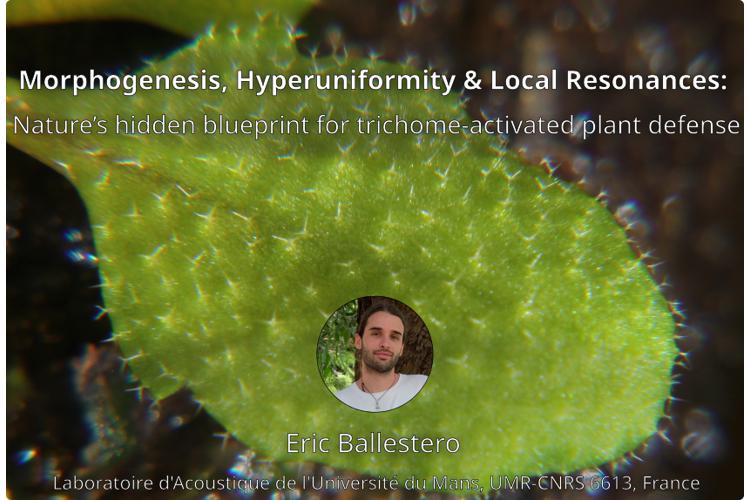- Imprimer
- Partager
- Partager sur Facebook
- Share on X
- Partager sur LinkedIn
Séminaire
Le 4 novembre 2024

Eric Ballestero (Laboratoire d'Acoustique de l'Université du Mans)
Brought by Alan Turing in 1952, the process of pattern formation, i.e., morphogenesis, has important biological, chemical and physical implications that play a major role in evolutionary and geophysical processes. In biology, for example, it can determine how certain stimuli-receptive cells will be distributed and further grow to fulfill a biological role. In the case of plants and vibrations, morphogenesis is crucial for the initiation and development of mechanoreceptive hair cells (trichomes) which play a crucial auto-immune role, with commonly-known examples in carnivorous plants which rely actively on the latter to catch their prey. More subtle is the reaction of the model plant Arabidopsis thaliana, which has been shown to acidify its leaves upon herbivory activity by caterpillars. The arrangement of its many hair cells on its leaves is thought to be one of the mechanisms involved. Although disordered, such distribution is not random but presents instead hyperuniform features, i.e., it displays a short- and long-range hidden order which may give rise to exotic mechanical wave propagation features through the leaves and therefore help actuate an auto-immune response. Revealing the morphogenetic and biomechanical role of A. thaliana hair cells could lead to a deeper understanding a Nature's blueprint concerning plant defense, and by extension, their evolution.
Contact: Benjamin Dollet
Date
11:00
Localisation
LIPhy, salle de conférence
- Imprimer
- Partager
- Partager sur Facebook
- Share on X
- Partager sur LinkedIn